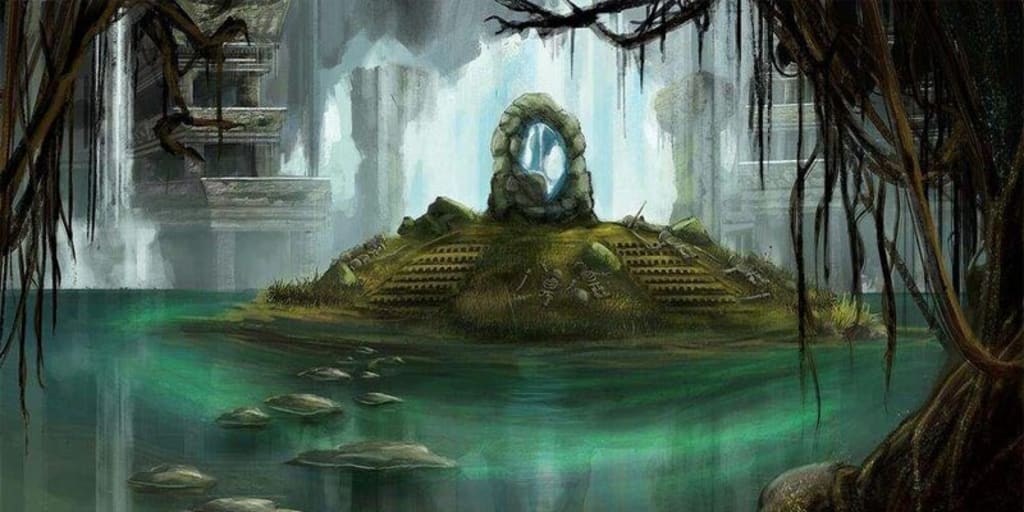The Water of Life: A Tale of Resilience and Hope
Discovering the Magic and Power of Nature in the Unlikeliest of Places

Once upon a time, in a small village nestled in the mountains, there lived a young girl named Amara. She was known for her kindness, her love for nature, and her innate curiosity. Her village was surrounded by lush green forests, gushing waterfalls, and crystal-clear streams that flowed through the valleys. The villagers were self-sufficient and had all they needed, except for one thing: water. The only source of water in the village was a small well that was always running dry. The villagers had to walk long distances to fetch water from the neighboring villages. Life was tough, but they had learned to live with it.
One day, Amara decided to explore the forests beyond her village. She wanted to know if there was any other source of water nearby. She packed some food, a water bottle, and her trusty machete, and set out on her journey. She walked for hours, enjoying the scenic beauty of the forests. She saw birds chirping, butterflies fluttering, and wildflowers blooming. She felt at peace and one with nature. As she walked deeper into the forest, she heard a strange sound. It was the sound of rushing water. She followed the sound and reached a small clearing. There, she saw a spring that was gushing water. She was overjoyed and filled her water bottle. She drank the water and felt a strange energy coursing through her body. She felt rejuvenated, as if she had been given a new lease of life. She realized that the water from the spring was no ordinary water; it was the water of life.
She hurried back to her village and told the villagers about the spring. They were skeptical at first, but Amara convinced them to follow her. They walked for hours, and finally, they reached the clearing. They saw the spring, and they were amazed. They drank the water, and they felt the same energy coursing through their bodies. They knew that they had found something special, something that could change their lives forever.
They decided to build a reservoir to store the water from the spring. It took them months of hard work, but finally, they had a reservoir that could store enough water for the entire village. They used the water for their crops, for their animals, and for themselves. They felt healthier and stronger than ever before. They realized that the water of life was not just a myth; it was real, and it had the power to transform their lives.
As the news of the water of life spread, people from neighboring villages started to visit Amara's village. They too drank the water and felt its magical powers. They started to trade with the villagers, offering them goods in exchange for the water of life. The village prospered, and the villagers were happy. Amara became a legend, and people started to call her the "Guardian of the Water of Life."
Years passed, and Amara grew old. She had children and grandchildren, but she never forgot about the water of life. She knew that it was her duty to protect it and to make sure that it was available to everyone who needed it. She trained her children and grandchildren to be the guardians of the water of life. She told them the story of how she had discovered the spring and how it had changed her life. She told them that the water of life was not just a source of water; it was a source of hope, of courage, and of strength. She told them that it was their responsibility to keep it safe and to make sure that it continued to bring joy and happiness to people.
As Amara grew older, she knew that her time was coming to an end. She called her family and friends and told them that she wanted to be buried near the spring. She wanted
her final resting place to be near the source of the water of life. She said that she wanted to be a part of it forever.
When Amara passed away, her family and friends fulfilled her last wish. They buried her near the spring, and they built a small shrine in her honor. The shrine became a place of pilgrimage for people who wanted to pay their respects to the Guardian of the Water of Life. The villagers continued to use the water of life, and they continued to prosper.
Years turned into decades, and decades turned into centuries. The village grew into a town, and the town grew into a city. The city became a hub of commerce and trade, and people from all over the world came to visit it. The water of life continued to flow, and it continued to bring joy and happiness to people. It became a symbol of the city's prosperity and a source of pride for its citizens.
However, with the city's growth came new challenges. The demand for water increased, and the city's infrastructure struggled to keep up. The reservoir that had once been enough for the entire village was no longer enough for the city's population. The city's officials realized that they needed to find a new source of water, but they didn't want to disrupt the flow of the water of life.
They hired experts to explore the area and find a new source of water. The experts searched for months, but they couldn't find anything. They had almost given up when they heard about the spring of the water of life. They knew that they had to investigate it. They visited the spring and saw the reservoir. They were amazed by the amount of water it could hold. They tested the water and confirmed that it was indeed the water of life.
The city's officials knew that they had a dilemma. They couldn't afford to lose the water of life, but they needed water to sustain the growing population. They called a meeting with the village elders and discussed their options. They realized that they had to find a way to use the water of life and find another source of water. They decided to build a pipeline that would transport water from the reservoir to the city. They would use the water of life for special occasions and emergencies, but they would rely on other sources for regular use.
The pipeline was a massive undertaking, but it was successful. The city's population had access to clean water, and the water of life continued to flow. It was no longer just the village's secret; it was now a part of the city's history and culture. The city's officials made sure to protect the spring and the reservoir, and they made sure that the water of life was available for future generations.
As the years passed, the city continued to grow, and the water of life continued to flow. It became a symbol of the city's resilience and determination. People from all over the world came to visit the spring, and they marveled at its beauty and power. They drank the water and felt its magical powers, just like Amara and the villagers had felt centuries ago.
The story of the water of life had become a legend, a tale that was passed down from generation to generation. It was a reminder of the power of nature and the importance of preserving it. It was a reminder that sometimes, the greatest treasures are hidden in the most unexpected places, waiting to be discovered by those who are curious enough to seek them out.
And so, the water of life continued to flow, nourishing the land and its people, and reminding them of the magic that exists in the world. The end.
About the Creator
muhammad nadeem naqvi
Naqvi is a renowned writer and journalist from lahore, Pakistan. He has written several critically acclaimed books on social issues and has been recognized with several awards and honors for his work.






Comments
There are no comments for this story
Be the first to respond and start the conversation.